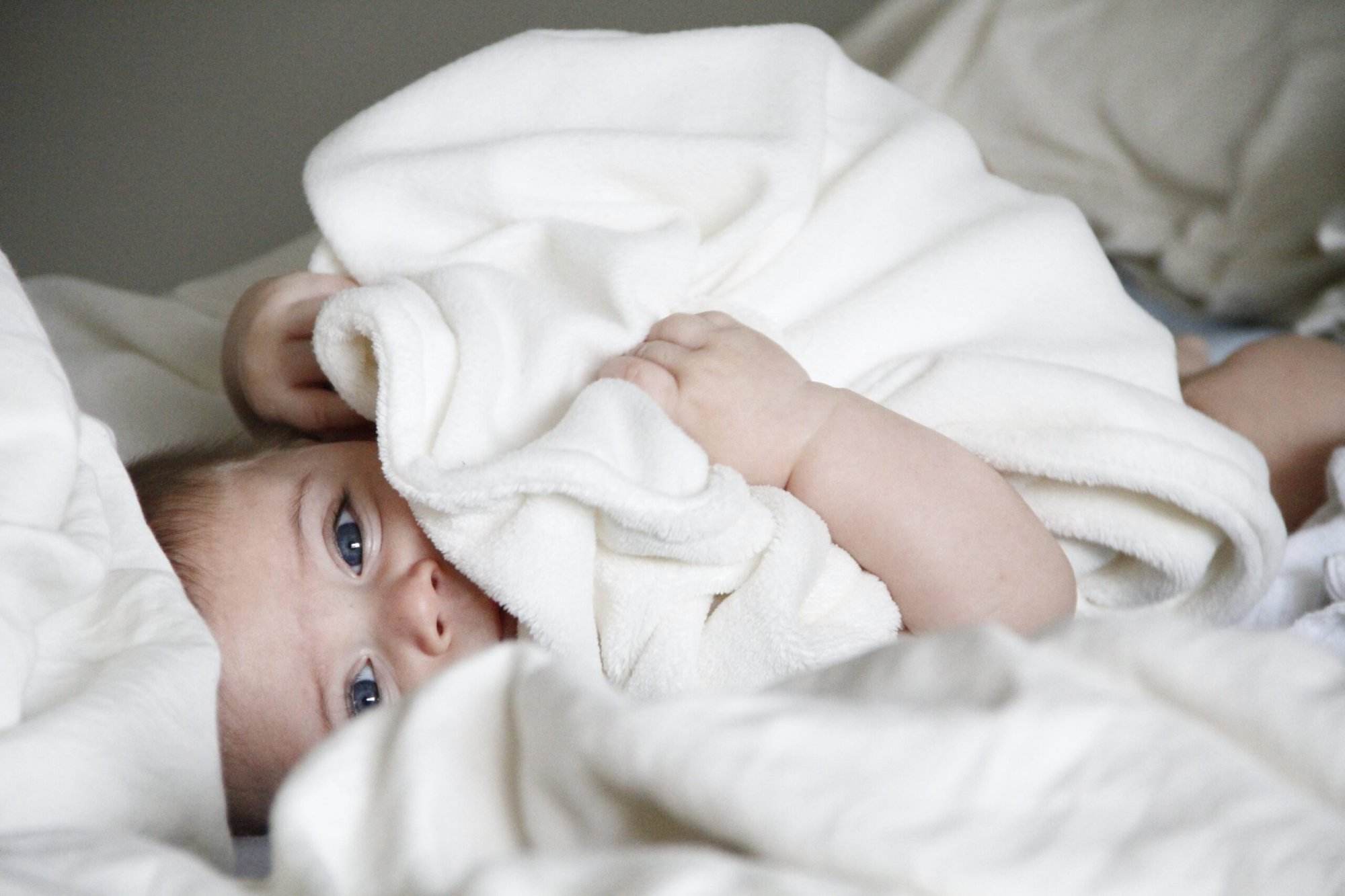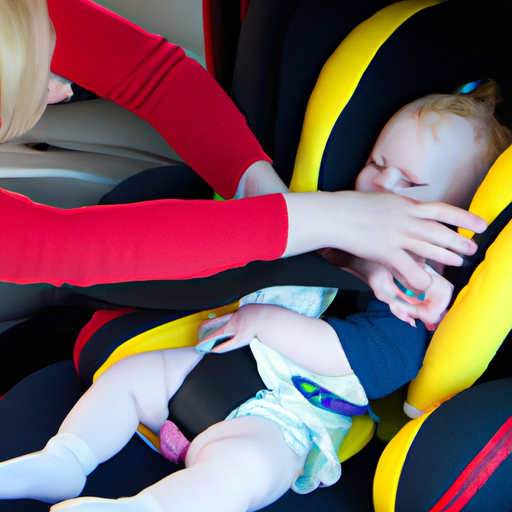In this article, you will find a simple guide on how to safely buckle your baby in a car seat. We all know how important it is to keep our little ones secure while traveling, and understanding the correct way to buckle them up can make a world of difference. From adjusting the straps to positioning the harness, these step-by-step instructions will ensure that your baby is snug and safe every time you hit the road. So, let’s get started and learn how to buckle a baby in a car seat!

1. Types of Car Seats
1.1 Rear-Facing Car Seats
Rear-facing car seats are designed to be used for infants and younger children. These seats are installed in the rear-facing position in the back seat of the vehicle. They provide optimal protection for the baby’s head, neck, and spine in the event of a crash. Rear-facing car seats are crucial for newborns and should be used until the child reaches the maximum weight or height limit specified by the manufacturer.
1.2 Convertible Car Seats
Convertible car seats offer the flexibility to be used in both the rear-facing and forward-facing positions. They can accommodate infants and young children, allowing them to transition from rear-facing to forward-facing as they grow. This type of car seat is a cost-effective option since it eliminates the need to purchase a separate forward-facing seat when the child outgrows the rear-facing position.
1.3 Forward-Facing Car Seats
Forward-facing car seats are designed for older children who have outgrown the rear-facing position. These seats are installed in the forward-facing position in the back seat of the vehicle. They come with a harness system to secure the child and provide protection in the event of a crash. It is important to note that children should remain in the rear-facing position until they reach the weight or height limit specified by the car seat manufacturer.
1.4 Combination Car Seats
Combination car seats are versatile options that can be used as both forward-facing car seats and booster seats. They offer a transition from the toddler years to the school-age years. Combination seats typically have a harness system for younger children and can later be converted into a booster seat by removing the harness. This allows for extended use as the child grows.
1.5 Booster Seats
Booster seats are designed for older children who have outgrown the forward-facing car seat. These seats elevate the child to a height where the vehicle’s seat belt fits properly across their lap and shoulder. Booster seats help to position the seat belt correctly on the child’s body, providing optimal safety during a crash. It is important to use a booster seat until the child is tall enough to properly fit in a regular seat belt without the assistance of a booster.
2. Choosing the Right Car Seat
2.1 Age and Weight Considerations
When choosing a car seat, it is important to consider the age and weight of your child. Each car seat has specific weight and height limits set by the manufacturer. It is crucial to choose a car seat that is appropriate for your child’s age and weight to ensure their safety. Rear-facing seats are suitable for infants and younger children, while forward-facing seats and booster seats are designed for older children.
2.2 Car Seat Safety Standards
Before purchasing a car seat, it is essential to research and choose a seat that meets the required safety standards. Look for car seats that adhere to the regulations set by your country’s safety standards organization. These standards ensure that the car seat has undergone rigorous testing and meets all safety requirements to protect your child in the event of a crash.
2.3 Installation Options
Consider the installation options available for the car seat you are considering. Some car seats use the LATCH (Lower Anchors and Tethers for Children) system, while others can be installed using the vehicle’s seat belt. Ensure that you are comfortable with the installation method and follow the manufacturer’s instructions carefully to guarantee a secure installation.
3. Reading the Car Seat Manual
3.1 Importance of the Manual
The car seat manual is a valuable resource that provides detailed instructions and guidelines for proper installation and usage of the seat. It is crucial to read the manual thoroughly before installing or using the car seat. The manual contains specific information regarding the seat’s weight and height limits, installation methods, and proper usage. By familiarizing yourself with the manual, you can ensure that you are using the car seat correctly and providing the highest level of safety for your child.
3.2 Understanding the Specifics
The car seat manual provides specific details about the seat, such as how to adjust the straps, buckle the harness, and position the seat in the vehicle. It is important to understand these specifics to ensure proper usage. The manual will also outline any additional features or accessories that may be included with the car seat, providing valuable information on how to utilize them correctly.
3.3 Tips and Warnings
The manual may include helpful tips and warnings related to the installation and usage of the car seat. These tips can provide guidance on common concerns or problems that may arise during installation or daily usage. Be sure to pay attention to any warnings issued by the manufacturer, as they are intended to prevent potential risks and ensure the safety of your child.
4. Preparing the Car Seat
4.1 Positioning in the Car
Correct positioning of the car seat is essential for ensuring your child’s safety. The car seat should be placed in the back seat of the vehicle, preferably in the middle seat, away from airbags. Make sure the car seat is level and properly reclined according to the manufacturer’s instructions. This will ensure optimal protection and comfort for your child during travel.
4.2 Adjusting Straps and Buckles
Before placing your child in the car seat, it is crucial to adjust the straps and buckles to the correct settings. The straps should be snug but not too tight, ensuring that your child is secure and comfortable. Follow the manufacturer’s instructions to properly adjust the straps and ensure that they are in the correct slots for your child’s height and weight.
4.3 Removing Bulky Clothing or Accessories
Avoid dressing your child in bulky clothing or accessories that can interfere with the proper fit of the car seat harness. Bulky clothing, such as winter coats or thick sweaters, can create a gap between the harness and your child’s body, compromising their safety. Instead, dress your child in thin layers and use blankets or jackets over the harness to keep them warm during the colder months.

5. Placing the Baby in the Car Seat
5.1 Proper Positioning
When placing your baby in the car seat, ensure that they are positioned correctly. The baby’s back should be flat against the back of the seat, and their bottom should be all the way back in the seat. Make sure your baby’s head is supported and not slumping forward.
5.2 Securing the Harness Straps
Before securing the harness straps, ensure that they are untwisted and properly threaded through the correct slots. Place the harness over your baby’s shoulders and buckle the chest clip at armpit level. The straps should be snug, with enough room for one finger to fit between your baby’s chest and the straps.
5.3 Checking for Snug Fit
Once the harness is secured, check for a snug fit by performing a “pinch test.” Try to pinch the harness strap at your baby’s shoulder. If you are unable to pinch any excess webbing, then the harness is properly snug. Adjust the straps if necessary to achieve a secure fit.
6. Buckling the Baby in the Car Seat
6.1 Buckling the LATCH or Seat Belt
Depending on the type of car seat and installation method, you will either buckle the LATCH system or the seat belt to secure the car seat in place. Follow the manufacturer’s instructions to ensure the correct and secure installation of the car seat. Ensure that the LATCH or seat belt is tightened properly, eliminating any excess movement of the car seat.
6.2 Securing the Chest Clip
Once the car seat is securely installed, fasten the chest clip on the harness at armpit level. The chest clip helps to keep the harness straps in position and provides an additional layer of security. Ensure that the chest clip is fastened properly and is not too tight or too loose on your child’s chest.
6.3 Tightening the Straps
After buckling the LATCH or seat belt and securing the chest clip, double-check the tightness of the harness straps. Make sure the straps are snug and secure, with no slack or looseness. Adjust the straps as necessary to achieve a proper fit, ensuring that your child is comfortable and well-protected.

7. Double-Check the Installation
7.1 Verifying a Stable Installation
Before hitting the road, it is crucial to double-check the stability of the car seat installation. Ensure that the car seat is firmly secured and does not move more than one inch in any direction when tested at the base. Check that the seat belt or LATCH system is correctly fastened and tightened to eliminate any excess movement.
7.2 Testing Firmness of Car Seat
Gently shake the car seat from side to side and front to back to test its firmness. The seat should not move excessively or shift out of place. If the car seat feels loose or unstable, revisit the installation steps and ensure that all elements are correctly secured and tightened.
7.3 Confirming No Excess Movement
After verifying the stability of the car seat, check for any excess movement or looseness in the harness straps. Ensure that the straps are properly tightened and that there is no excess slack. Confirm that the chest clip is in the correct position and fastened securely. A properly installed and adjusted car seat should provide a snug and secure fit for your child.
8. Adjusting the Car Seat as the Baby Grows
8.1 Knowing When to Transition
As your child grows, it is important to transition them to the appropriate type of car seat. Monitor their height and weight regularly and refer to the car seat manufacturer’s guidelines for transitioning to the next stage. Moving from a rear-facing to a forward-facing seat, and later to a booster seat, ensures that your child is always properly protected based on their size and age.
8.2 Adjusting Harness Heights
As your child grows taller, it is crucial to adjust the harness heights in the car seat. This ensures a proper fit and optimal protection. Follow the manufacturer’s instructions for adjusting the harness heights, making sure that the straps are placed at or above your child’s shoulders in the forward-facing position and at or below the shoulders in the rear-facing position.
8.3 Rear to Forward-Facing Transition
When transitioning your child from a rear-facing to a forward-facing car seat, it is important to follow the manufacturer’s guidelines. The transition is typically recommended when the child reaches the maximum weight or height limit for the rear-facing position. Be sure to install the forward-facing seat according to the manufacturer’s instructions and adjust the harness straps and height accordingly.

9. Car Seat Safety Tips
9.1 Regularly Inspect the Car Seat
Regularly inspect your car seat to ensure it is in good condition. Check for any signs of wear and tear, such as fraying straps, cracked plastic, or loose screws. Make sure the harness straps are clean and not twisted. By inspecting your car seat regularly, you can identify any potential issues that may affect its performance and safety.
9.2 Avoid Used or Expired Car Seats
It is important to avoid using used or expired car seats. Used car seats may have been involved in a crash or have hidden damage that compromises their safety. Additionally, car seats have an expiration date, typically around six years from the date of manufacture. Using an expired car seat can put your child at risk as the materials may degrade over time. Always opt for a new car seat to ensure maximum safety.
9.3 Be Mindful of Bulky Clothing
Avoid dressing your child in bulky clothing or jackets while they are secured in the car seat. Bulky clothing can create a gap between the harness and your child’s body, reducing the effectiveness of the restraint system. Dress your child in thin layers and use blankets or jackets over the harness to keep them warm without compromising their safety.
10. Practice and Get Familiar
10.1 Practice Buckling Techniques
Practice buckling and unbuckling the car seat harness to become familiar with the process. This will help you gain confidence and speed when securing your child in the car seat. Familiarize yourself with the correct adjustments and tighten the straps to achieve a proper fit. By practicing regularly, you will ensure that you can quickly and securely buckle your child in the car seat every time.
10.2 Seek Expert Guidance
If you have any concerns or questions about buckling your baby in a car seat, don’t hesitate to seek expert guidance. Reach out to your local car seat installation station or a certified child passenger safety technician. These professionals can provide hands-on guidance and answer any specific questions you may have about your car seat or installation process.
10.3 Familiarize Yourself with Different Car Seats
Take the time to familiarize yourself with the different types of car seats available in the market. Understand their features, installation methods, and age/weight requirements. This knowledge will help you make informed decisions when choosing the right car seat for your child’s specific needs. Stay updated with the latest car seat safety guidelines and be proactive in ensuring your child’s safety while traveling.






